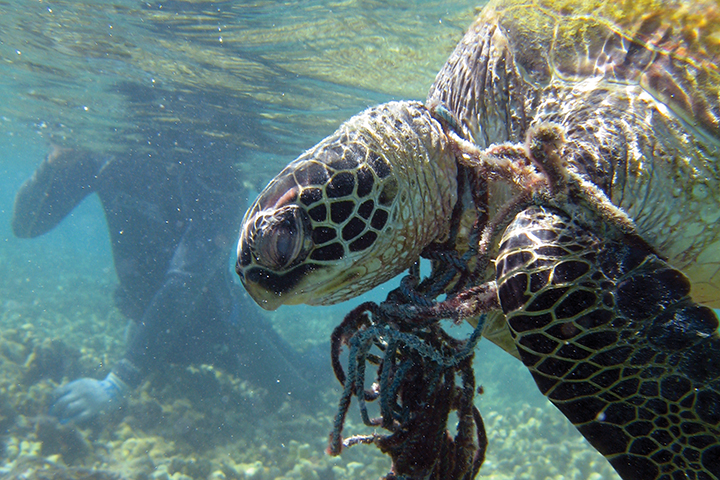Jellyfish are different, at least some of them. The comb jellyfish
“Pacific sea gooseberry”
(Pleurobrachia bachei) hunts for food. It is a predator, paddling through the sea, and
grasping its prey with sticky tentacles.
 |
| Pacific sea gooseberry (from Wikipedia Commons) |
Recent analysis of the Pacific sea
gooseberry revealed a fascinating detail, making them much of an
alien [1]. Their nervous system miss the habitual set of components that
are found in most other animals. The chemical signals
(neurotransmitter) of the Pacific sea gooseberry, which make the nerves work are different. The Pacific sea gooseberry does not use the set of chemical signals that we know from most animals.
Without question, the Pacific sea gooseberry has a fully
developed nervous system. It consist of a network with a ring of nerves
around the mouth. The nervous systems senses light, detects prey and
coordinates moves of muscles. However, the nervous system performing
these operations is using different chemical signals. That is less
than a detail. It indicates that nervous systems evolved on Earth
twice, at least. The deciphered gene code of the Pacific sea
gooseberry shows this.
Other differences between Pacific sea gooseberry and
other animals are found for immune and development genes, and
respectively for the related physiological processes.
Whether
comb jellies descend from ancient organisms that lived 580
million years ago (in the Ediacaran [*] ), as some speculate, is a provocative hypothesis. If
that is the case, then the
Pacific sea gooseberry
may trace that ancient world to present times and indicate how
complex this ancient world was already. Ecosystems with prey-predator
relationship existing more than half a billion years ago!
 |
| A comb jellyfish (from Wikipedia Commons) |
A
less precocious hypothesis would be that the evolution of
Pacific sea gooseberry included the replacement of the chemical
signals that we know to be common in nearly all animals.
What
should be noted, beyond any speculation, that the sea is full of
treasures. Many we only do not know; one more was discovered recently.
Understanding that nervous systems, immune systems or development
process can be constructed from different building blocks is deep
insight with possibly far-reaching consequences,
be it for regenerative
medicine or synthetic biology [3].
Comb jellyfish [**] are classified as a sister group to
jellyfish and sea anemones. This kind of animals are ancient and
lived in the ocean since very long time, even if the modern species
evolved more recently. These animals have in common that the
distinction between head and rears does not apply to them as it
applies for slugs, fish and humans. This feature makes them simpler
and they are put at the bottom of the tree of life, comb jellies
among them. Thus it is useful to assume that similar functions
evolved several times along parallel paths.
Martin.Mundusmaris@gmail.com
info@mundusmaris.org
[*]
The
Ediacaran (635 - 542 million years) is the geological period
preceding
the Cambrian
Period.
The Ediacaran biota have little resemblance to modern lifeforms and
include the oldest organisms
with
tissues; hard-shelled animals had yet to evolve.
[**]
http://en.wikipedia.org/wiki/Comb_jelly
[1] Ewen Callaway (2014) Jelly genome mystery, Nature (509) p. 411
[2] Leonid L. Moroz et al. (2014), The ctenophore genome and the evolutionary origins of neural systems, NATURE, doi:10.1038/nature13400
[3] http://www.japantimes.co.jp/news/2014/05/22/world/science-health-world/simplest-animals-may-help-cure-brain-disease/#.U4dkbnJ_tgA
.


